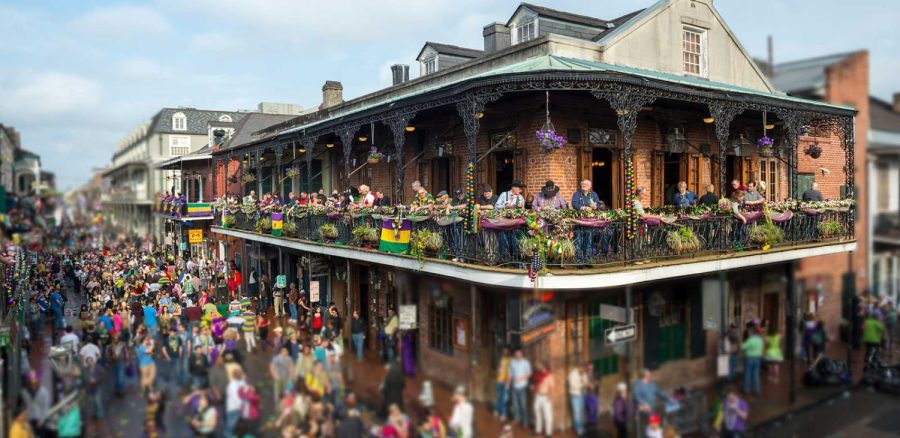Parading Through Time: The Colorful History of Mardi Gras
March 11, 2022
Mardi Gras is a three-month period where thousands of people in New Orleans gather together for a parade. At the parades, there are huge floats, unique costumes, and a surplus of enthusiasm.
It’s the first year the Mardi Gras celebration has continued since the pandemic began. They canceled the celebration in 2021 due to the virus hitting peak numbers in Louisiana. With the celebration reopening this year, a whopping 1.4 million people attended the event. The celebration dates back to medieval Europe, with celebrations in Rome and Venice, and has continued to rise in popularity throughout the years.
The origins of Mardi Gras were based on the powers of spring and fertility. However, once Christianity rose in popularity in European countries such as Rome, the holiday became more religious. The celebration became a 40-day prelude to the holiday that is Lent. Because of the connection to Lent, people would celebrate with a lot of rich, fatty foods. The foods would include meat, eggs, and dairy, as well as baked goods.
A holiday derived from Mardi Gras is Carnival. This celebration was included in the Latin American faiths and practices. The first Mardi Gras in America was celebrated in 1699 when French explorers landed near what is now considered New Orleans. These celebrations were banned once the Spanish took over in 1812 when Louisiana became a state. After statehood, the people of Louisiana got together and brought the activities back. Students dressed in colorful costumes and danced throughout the street, which would later end up creating a proud tradition.
Mardi Gras is beloved by many and continues to be a big part of the culture. The pandemic took a toll on the community of New Orleans, and with the spread of COVID-19, they weren’t able to connect in the way that their ancestors once did. Thankfully, with the help of the vaccine and the pandemic wrapping up after two years, the festivities can occur once again. Mardi Gras is a time of freedom and unity, and for the next few years, hopefully, it will remain that way.


